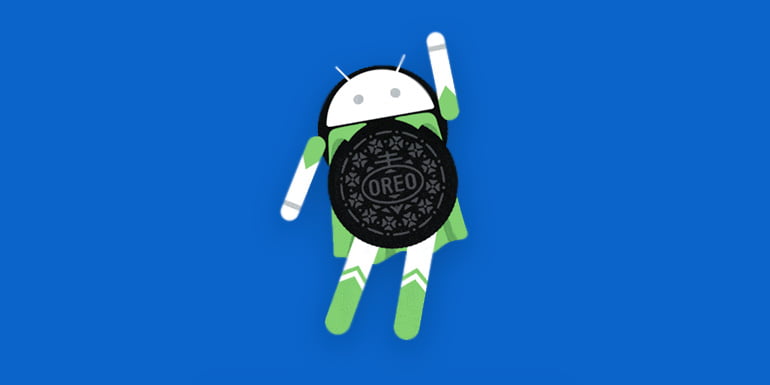Android 8.0 is finally official and is named after the world’s favourite cookie Oreo from Nabisco. The launch event was streamed live on YouTube from 14th Street Park, New York. As the countdown ended the Android robot was unveiled in an all new celestial superhero attire – Android Oreo. Even though Oreo was brought to life during the solar eclipse, he is here to make our lives easier, brighter, and more fun. Let’s find out more about Android Oreo.
Features Of Android Oreo
Android Oreo is Smarter, faster, more powerful and sweeter than ever. The final release isn’t much different from the developer preview. Let us open the wonder and taste it’s sweeter creme.
- 2x faster: It is now 2 times faster. Your device now boots up quickly when powering up.
- Background limits: The background activity of least used apps is now minimal.
- Autofill: A new feature which remembers your app logins just like a browser saving website passwords.
- Picture-in-Picture: This allows you to see two apps at once, for e.g. you can minimize a video call to check your schedules.
- Notification Dots: Press the dots over app icons to preview what is new and clear the notifications from the bar as usual.
- Android Instant Apps: Instant apps allow you to run apps within your browser without installation.
- Google Play Protect: Your device and apps are now safe, scans over 50 billion apps per day by this feature.
- Improved battery life: Now it offers more battery life keeping you talking, playing, working and streaming.
- New Emoji Collection: Fully redesigned set of unicode 10 emoji’s including 60 new ones, replacing blobs with faces.

Enhancements In Android Oreo
Apart from these features, a multitude of other enhancements makes Oreo super powerful.
- Accessibility button: Allows a quick access to the navigation bar accessibility features, like magnification, and accessibility service functions, like Select to Speak.
- Accessibility volume: Optimized audio experience for disabled persons.
- Adaptive icons: Developers can now use a full-bleed square shaped icon, OEMs can mask to ensure intra-device stability.
- Ambient screen: Highlighting incoming notification and select app with larger fonts, providing immediate access to actions.
- Background execution limits: Improved system performance with better background execution and resource utilization.
- Background location limits: Limiting the frequency of location updates in the background for improving system health.
- Deep colour: Applications have full-color management access and can render richer images in the format and quality they intend.
- Downloadable fonts: Developers no longer need to add custom fonts in apps, so this helps to reduce the app size.
- Install unknown apps: Installation of APKs from unknown sources will now have per-source permissions.
- Integrated printing support: You no longer need to install Mobile print service as it comes inbuilt and supports 97% of Mopria certified printers.
- Linkable files: A new API that allows apps to create shareable web links for files across the Internet.
- Native C/C++ API for high-performance audio: Support for high-performance audio including Native C/C++ audio API.
- Notification categories: More consistent and high level of control over annoying notifications.
- Notification snoozing: Users can hide notifications for a period of time, similar to Inbox snoozing.
- Project Treble: Updating devices is now easier and faster for vendors. This modular architecture allows hardware makers to deliver Android updates without much plea from user community.
- TextView auto-sizing: Developers can now allow automatic text resizing based on context on different screens or with dynamic content.
- Tooltips: Support for tooltips for views and menu items, as small popup windows with descriptive text
- Wi-Fi Assistant: It auto-connects you to a high-quality open WiFi and secures your connection with a Google backed VPN.
That was all about the new Android OS Oreo from Google. They are now uploading Oreo source code to AOSP, and the roll-out will happen soon to compatible Nexus and Pixel devices. This includes the Nexus 5X, Nexus 6P, Nexus Player, Google Pixel C, Google Pixel and Google Pixel XL. Hope you enjoyed the article, Peace!


